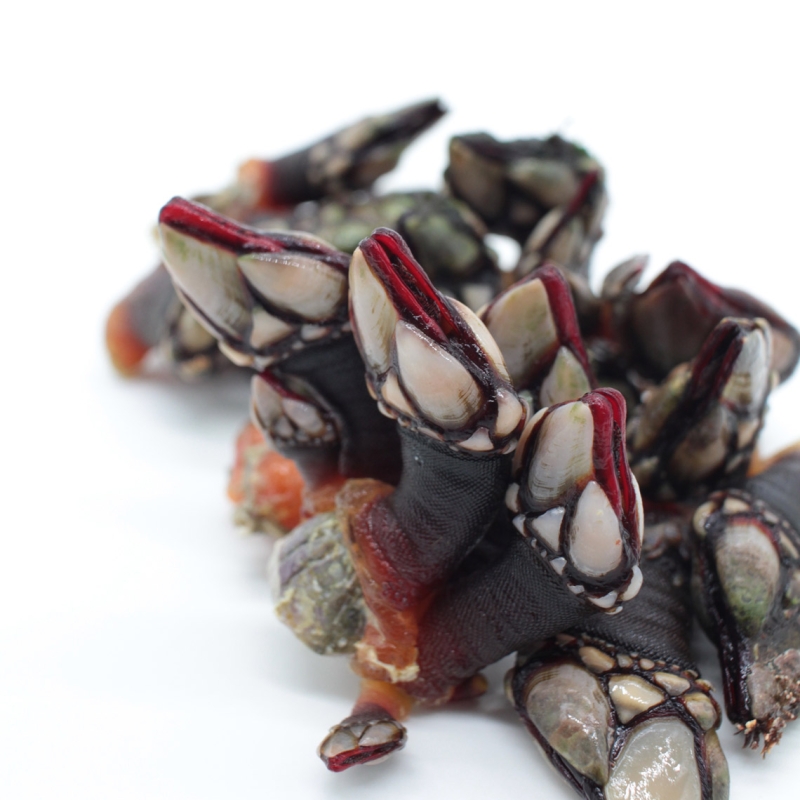The goose barnacle is a crustacean that grows on rocks beaten by the waves. They’re filter feeders, remaining immobile but attached to rocks throughout their adult life due to their lack of limbs. With no eyes, their body is protected by a series of plates, and it’s attached to the substrate by a peduncle.
They can be found in many places, but the best are undoubtedly on the Galician coast, and they’re a key product of our gastronomy. They’re manually caught on the rocks in the intertidal zone of the estuaries, cliffs, islands, etc., which poses a considerable risk to the ‘percebeiros’.
The Galician goose barnacle is rich in minerals (phosphorus, potassium, selenium, magnesium and sodium) and B vitamins (B1, B2, B3, B6, B9 and B12). It also contains smaller amounts of calcium, iron and vitamin E. All these properties support the proper functioning of our body by increasing our energy levels and defences.
To cook the goose barnacles, add seawater to a pot along with a bay leaf, or, failing that, water with plenty of salt. When it boils, add the barnacles, then remove them when the water boils again. In short, all they need is a quick boil in sufficiently salty water. We highly recommend serving them hot.
Name: Goose Barnacle (Pollicipes cornucopiae)
FAO 3-alpha code: PCB
Area of catch or farming: FAO-27
Sub-area: IXa Galician and Portuguese waters
Production method: Extractive
Fishing gear: Scrapers
Store between: 0-4ºC
IMPORTANT: The net quantity and expiry date of the product will be specified at the time of delivery.





